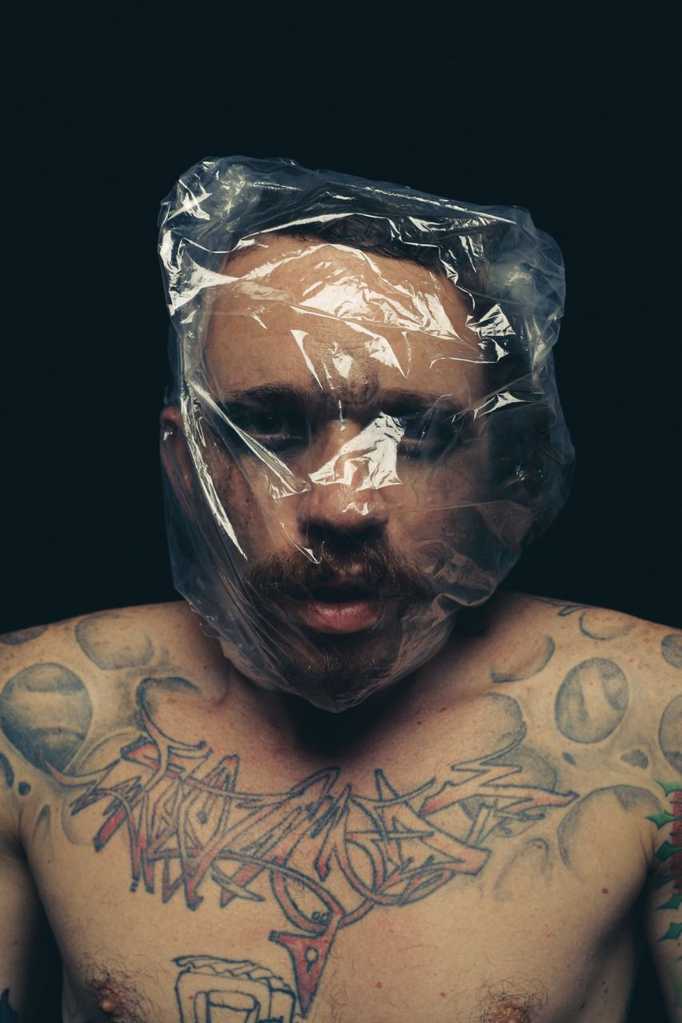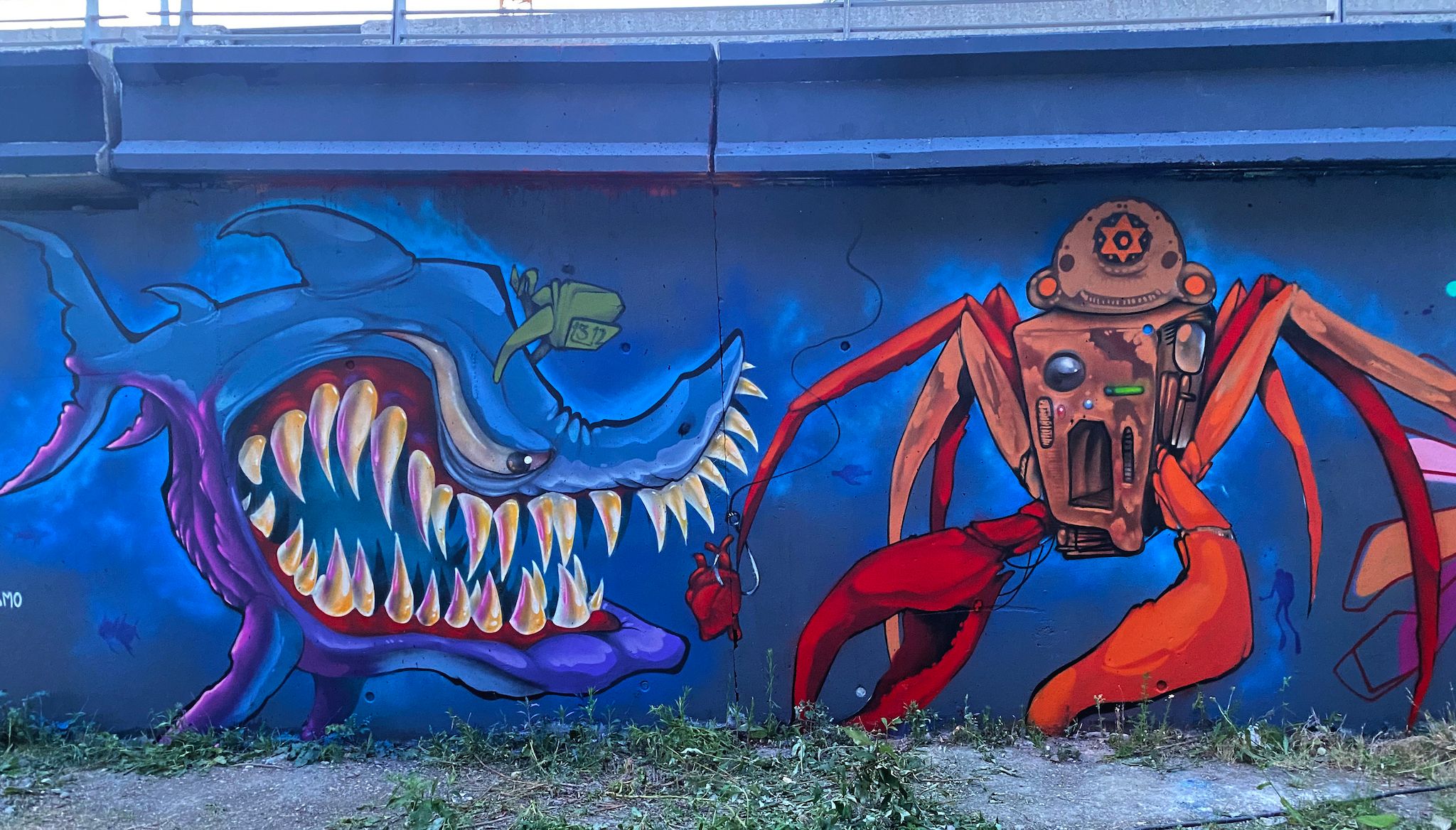Sharks and Crabs of Josué de Castro

Artist — Shell Osmo
Working with The Outlaw Ocean Project reinforced my sense of hope, knowing that it would stimulate an important discussion on ocean issues.
Our community experienced a major oil spill, which was an environmental disaster. So, the coast of Pernambuco still suffers from the problems caused by oil. Some species are still quite damaged and there are some studies saying that it will take another five years to get back to normal.
From the book, I was most impacted by the same issues that the artist Mag Magrela portrayed, sea slavery and the illegal capture of depleted fish. Overall, I found the project’s mixture of the journalistic and artistic universes to be brilliant.
My work really focuses on things that I can't write or verbalize in a very transparent way. So, the drawings I do here in my community are a form of dialogue that I have with people. I believe graffiti art is transformative and I use it to talk to these people on a daily basis.
Regarding the challenges of producing my art for The Outlaw Ocean Mural Project, I wanted to highlight a local situation with the Bull shark. This shark species was greatly harmed by construction that changed the entire ecosystem, and thus, the shark’s behavior. So today, Recife has one of the highest Bull shark attack rates in the world. The truth is the Bull Shark is a victim of human actions and he is demonized as a predator when, in fact, the species is just after food, not humans. When the Bull shark is in their normal environment, these attacks on people rarely happen. Essentially, the aggression against humans was a human-created problem.
To display my art, I chose a spot that is a temple for graffiti in Europe called Spot 13. Here, the art is highly visible. So, I thought it was important to promote this cause in this location.

MURAL LOCATION — Paris, France
Artist Bio —
Shell Osmo is from Recife, Brazil and is one of the co-founders of the collective “Pão e Tinta” and the affiliated festival. He is a street artist, cultural producer and illustrator.
Osmo is an artist who illustrates riverside life. His works are always about what he experiences in the community of Pina. Pina is a traditional neighborhood which includes a very large floating community known as palafitas. The palafitas are close to Parque dos Manguezais, Parque José de Castro, which is one of the largest mangrove parks in Latin America. Osmo portrays the flora and fauna of the region in his work, while also illustrating the lives of the people in the area.
The community of Pina is the most painted square meter in the state of Pernambuco. Osmo’s family were militants from Brasília Teimosa who lived along the coast. He takes great pride in creating his art.
Murals added monthly